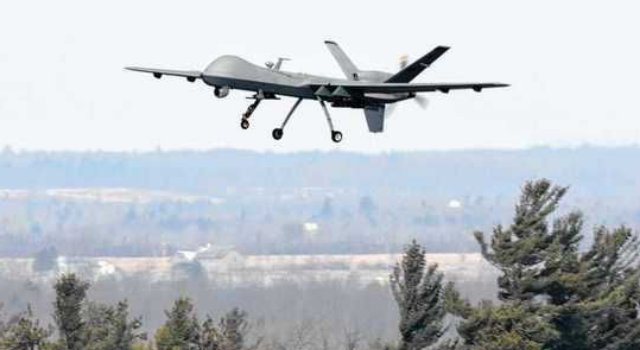The U.S. Air Force sent out a worldwide alert bulletin to operators of its MQ-9 Reaper after a software error in navigation equipment caused one to crash in Lake Ontario northwest of Syracuse, the chief accident investigator said in an interview.
Within two days of the Nov. 12 crash, the Air Force determined that two GPS/Inertial Navigation Systems failed to operate properly because of the software problem, said Colonel Dana Hessheimer, the Air Force official who led the investigation.
The Air Force and manufacturer Honeywell Aerospace immediately sent out an alert bulletin to all units with deployed Reapers, instructing them to cease using the faulty software immediately, Hessheimer said.
“There was some sort of software problem with the thing, and they corrected it right away,” Hessheimer said in his first public comments since the Air Force released a 21-page report on July 2 that blamed the crash on two failed GPS units.
Hessheimer said he was not authorized to disclose specifics about the software problem for national security reasons.
“I can’t really get into the details because that was all redacted from the companies that made it,” he said.
Hessheimer said two previous failures of the navigation units in the Reaper in the days leading up to the crash were related to the same software problem that has since been corrected.
The Lake Ontario crash was the first on record involving navigation units in the MQ-9 Reaper, among the largest remotely piloted planes in the Air Force.
The lost aircraft was one of two flying together on a training mission after taking off from Wheeler-Sack Military Army Air Field at Fort Drum. The drones are piloted remotely by members of the Air National Guard’s 174th Attack Wing at Hancock Field in Mattydale.
The navigation equipment is routinely used by the remotely piloted aircraft to help determine the aircraft’s position, and report to a satellite if the aircraft is speeding up, rolling or turning.
After the navigation system failed in the ill-fated plane, it went into a right spin and crashed into Lake Ontario near Montario Point, on the border between northern Oswego County and southern Jefferson County.
Only light composite pieces of the plane that floated on the water were recovered, Hessheimer said today. The aircraft’s hardware, including navigation units, were never recovered and likely sunk to the bottom of the lake.
Hessheimer, commander of the 163d Reconnaissance Wing at March Air Reserve Base in Riverside, Calif., oversees a unit that operates MQ-1 Predator drones, a slightly smaller and older version of the Reaper.
Asked what he would tell residents of Northern and Central New York concerned about the safety of the Reaper drones, Hessheimer said, “I’ve been flying these things since 2007 and I have all the confidence in the world in them.”
He said the MQ-9 Reaper has a lower accident rate per-hour-flown than F-16s, which are not remotely operated.
“I am a huge proponent of these things,” Hessheimer said of the Air Force drones. “I know it’s a new technology and it scares the public because it’s a new technology. But it’s just like anything else — new technologies scare people.”
Source: Syracuse.com

